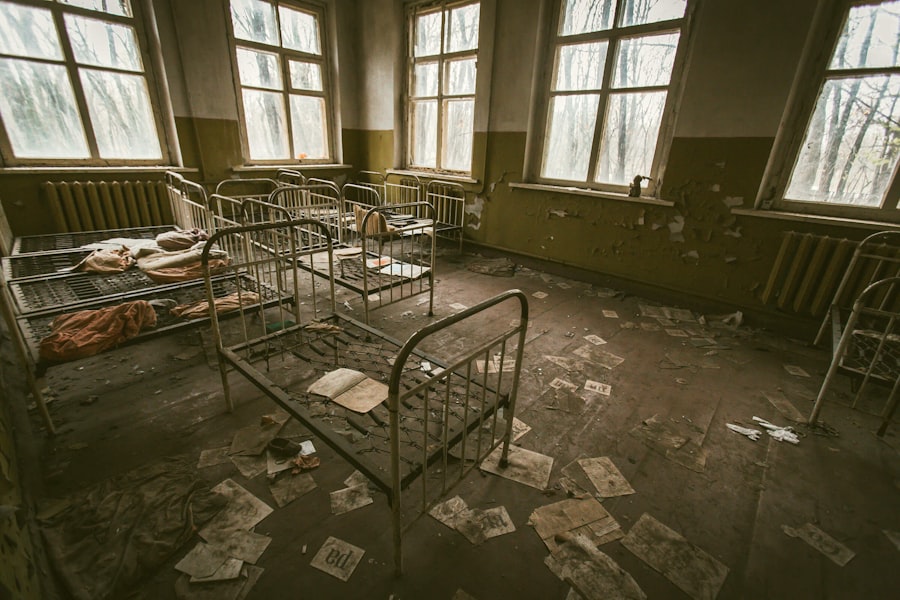Scottish marriage records are a vital resource for anyone delving into the rich tapestry of their ancestry. These records not only document the union of two individuals but also serve as a window into the social, cultural, and historical contexts of the time. As you embark on your genealogical journey, understanding the significance of these records can provide you with invaluable insights into your family’s past.
The records encompass a wide range of information, including names, dates, and locations, which can help you piece together your family tree and uncover stories that have been long forgotten. In Scotland, marriage records date back to the 16th century, making them one of the oldest forms of civil documentation in the country. The preservation of these records has been a priority for various institutions, ensuring that they remain accessible for future generations.
As you explore these documents, you will find that they not only reveal the names of your ancestors but also offer glimpses into their lives, such as their occupations, places of residence, and even their familial connections. This rich historical context can enhance your understanding of your heritage and provide a deeper appreciation for the lives your ancestors led.
Summary
- Scottish marriage records are a valuable resource for genealogical research, providing vital information about ancestors and their families.
- Understanding the different types of Scottish marriage records, such as statutory and parish records, can help genealogists access the most relevant information for their research.
- Accessing Scottish marriage records can be done through various channels, including online databases, archives, and local registration offices.
- Tips for searching and utilizing Scottish marriage records include using wildcard searches, exploring alternative spellings, and cross-referencing with other records.
- The future of Scottish marriage records lies in digitalisation and preservation efforts, which will make these valuable resources more accessible to genealogists worldwide.
Understanding the Importance of Marriage Records in Genealogy
Marriage records are often considered one of the cornerstones of genealogical research. They serve as a crucial link between generations, allowing you to trace familial connections and establish relationships within your family tree. When you examine these records, you may discover not only the names of your ancestors but also their parents’ names, which can lead you further back in time.
This interconnectedness is essential for building a comprehensive understanding of your lineage. Moreover, marriage records can shed light on social customs and practices that were prevalent during different periods in Scottish history. For instance, the way marriages were recorded and celebrated can reflect societal norms and values.
By studying these records, you can gain insights into the lives of your ancestors, including their social status, religious affiliations, and even migration patterns. This broader perspective can enrich your understanding of your family’s history and provide context for the choices your ancestors made.
Types of Scottish Marriage Records Available

In Scotland, there are several types of marriage records that you can access, each offering unique insights into your family history. The most common types include statutory marriage records, church marriage records, and banns of marriage. Statutory marriage records were introduced in 1855 and are maintained by the General Register Office for Scotland (GROS).
These records typically include detailed information such as the names of both parties, their ages, occupations, and places of residence at the time of marriage. Church marriage records are another valuable resource, particularly for those whose ancestors were married before 1855. Many churches kept their own registers of marriages, which can provide additional details not found in statutory records.
These registers may include information about the couple’s families and witnesses, offering a more personal glimpse into their lives. Banns of marriage, which are public announcements made prior to a wedding, can also be useful in genealogical research. They often contain information about the couple’s intended marriage date and their respective parishes, helping you to trace their movements and connections within local communities.
How to Access Scottish Marriage Records
Accessing Scottish marriage records has become increasingly straightforward thanks to advancements in technology and digitalisation efforts. You can begin your search by visiting the official website of the General Register Office for Scotland (GROS), where you will find a wealth of resources related to marriage records. The GROS provides online access to statutory marriage records from 1855 onwards, allowing you to search by name, date, and location.
This user-friendly interface makes it easier for you to locate specific records that may be relevant to your family history. In addition to GROS, various local archives and libraries across Scotland house historical marriage records that may not be available online. Visiting these institutions can provide you with access to church registers and other documents that may contain valuable information about your ancestors’ marriages.
Many local councils also maintain their own archives, which can be a treasure trove of genealogical data. If you are unable to visit in person, consider reaching out to these institutions via email or phone; many are willing to assist with research requests or provide guidance on how to access their collections.
Tips for Searching and Utilising Scottish Marriage Records
When searching for Scottish marriage records, it is essential to approach your research methodically. Start by gathering as much information as possible about your ancestors before diving into the records. Knowing their full names, approximate dates of marriage, and locations will significantly enhance your chances of finding relevant documents.
Additionally, consider variations in spelling or name changes that may have occurred over time; this flexibility can open up new avenues for discovery.
Once you have located a record, take the time to analyse it thoroughly. Look beyond just the names and dates; examine any additional information provided that could lead you to further discoveries.
For instance, witness names may reveal connections to other family members or friends who played significant roles in your ancestors’ lives. Furthermore, consider cross-referencing marriage records with other documents such as birth or death certificates to build a more comprehensive picture of your family history.
Common Challenges in Researching Scottish Marriage Records

While Scottish marriage records are an invaluable resource for genealogical research, they are not without their challenges. One common issue is the inconsistency in record-keeping practices over the centuries. Before 1855, many churches maintained their own registers with varying levels of detail and accuracy.
This inconsistency can make it difficult for you to locate specific records or verify information about your ancestors’ marriages. Another challenge is the potential for missing or damaged records due to historical events such as fires or natural disasters. Some records may have been lost or destroyed over time, leaving gaps in your family history that can be frustrating to navigate.
Additionally, language barriers may arise if your ancestors’ names were recorded in Scots Gaelic or other dialects; understanding these variations is crucial for successful research.
Case Studies: Using Scottish Marriage Records to Uncover Family History
To illustrate the power of Scottish marriage records in genealogical research, consider a hypothetical case study involving a researcher named Sarah. Sarah is keen to learn more about her paternal grandfather’s family but has hit a wall in her research. After discovering her grandfather’s marriage record from 1920 in Edinburgh, she finds not only his name but also his father’s name listed as a witness.
This leads her to explore further into her great-grandfather’s life and uncover his immigration story from Ireland. In another example, a researcher named James is investigating his maternal lineage and discovers a marriage record from 1805 in a small village in the Highlands. The record reveals that his ancestors were married in a local church with several family members listed as witnesses.
By cross-referencing this information with local census data and parish registers, James is able to trace his family back several generations and uncover fascinating stories about their lives in rural Scotland.
Future of Scottish Marriage Records: Digitalisation and Preservation Efforts
The future of Scottish marriage records looks promising as digitalisation efforts continue to expand access to these vital resources. Many organisations are working diligently to digitise historical documents and make them available online for researchers like yourself. This shift towards digital access not only enhances convenience but also ensures that these important records are preserved for future generations.
In addition to digitalisation efforts, there is an increasing focus on preserving physical records through proper archiving techniques and climate-controlled storage facilities. These initiatives aim to protect fragile documents from deterioration while ensuring that they remain accessible for genealogical research. As technology continues to evolve, it is likely that new tools will emerge to assist researchers in navigating these records more efficiently, making it easier than ever for you to uncover the stories of your ancestors through Scottish marriage records.
For those planning a wedding in Scotland and interested in a humanist ceremony, it’s essential to understand what makes these celebrations unique and meaningful. A highly recommended resource is an article titled “Humanist Weddings: What You Need to Know,” which provides comprehensive insights into the nature of humanist weddings, the roles of celebrants, and the legalities involved in Scotland. This article is a must-read for anyone considering this personalised and non-religious approach to their special day. You can read more about it by visiting Humanist Weddings: What You Need to Know.
FAQs
What are marriage records in Scotland?
Marriage records in Scotland are official documents that provide details about a marriage ceremony. These records typically include the names of the individuals getting married, the date and location of the marriage, and the names of witnesses.
How can I access marriage records in Scotland?
Marriage records in Scotland are held by the National Records of Scotland (NRS). They can be accessed online through the ScotlandsPeople website, or in person at the NRS’s search rooms in Edinburgh.
What information is included in marriage records in Scotland?
Marriage records in Scotland typically include the full names of the individuals getting married, their ages, occupations, marital status, and the names of their parents. The records also include the date and location of the marriage, as well as the names of witnesses.
Are marriage records in Scotland public information?
Marriage records in Scotland are considered public information, and anyone can access them. However, there are restrictions on accessing records that are less than 50 years old in order to protect the privacy of living individuals.
Can I obtain a copy of a marriage record in Scotland?
Yes, you can obtain a copy of a marriage record in Scotland by ordering it online through the ScotlandsPeople website, or by visiting the NRS’s search rooms in person. There is a fee for obtaining copies of marriage records.
What can I use marriage records in Scotland for?
Marriage records in Scotland can be used for a variety of purposes, including genealogical research, legal documentation, and verifying marital status for official purposes. They can also provide valuable information for family history and ancestry research.

